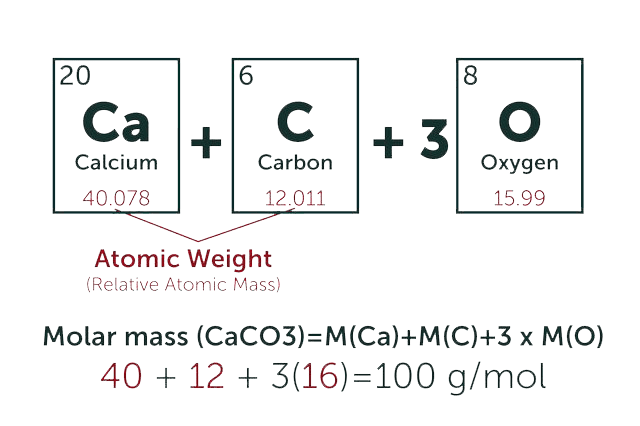Magainin I
* Please be kindly noted products are not for therapeutic use. We do not sell to patients.

| Category | Antibiotics |
| Catalog number | BBF-03785 |
| CAS | 108433-99-4 |
| Molecular Weight | 2409.85 |
| Molecular Formula | C112H177N29O28S |
| Purity | >95% |
Online Inquiry
Capabilities & Facilities
Fermentation Lab
4 R&D and scale-up labs
2 Preparative purification labs
Fermentation Plant
Semi pilot, pilot and industrial plant 4 Manufacturing sites 7 Production lines at pilot scale 100+ Reactors of 30-4000 L; 170+ reactors of 20 KL-30 KL; 24+ reactors of >100 KL 2 Hydrogenation reactors (200 L, 4Mpa and 1000L, 4Mpa)
Product Description
Magainin I is a peptide antibiotic with antibacterial and antiparasitic activities, originally extracted from the skin of Xenopus laevis. It has a broad spectrum of non-specific activity against a variety of microorganisms, including viruses, gram-positive and gram-negative bacteria, protozoa, yeast and fungi, and may also have hemolytic and cytotoxicity to cancer cells. Magainin 1 is a fungicide. Magainin 1 has an inhibitory effect on herpes simplex virus type 1 (HSV-1) and HSV-2.
- Specification
- Properties
- Reference Reading
- Price Product List
| Synonyms | H-Gly-Ile-Gly-Lys-Phe-Leu-His-Ser-Ala-Gly-Lys-Phe-Gly-Lys-Ala-Phe-Val-Gly-Glu-Ile-Met-Lys-Ser-OH; glycyl-L-isoleucyl-glycyl-L-lysyl-L-phenylalanyl-L-leucyl-L-histidyl-L-seryl-L-alanyl-glycyl-L-lysyl-L-phenylalanyl-glycyl-L-lysyl-L-alanyl-L-phenylalanyl-L-valyl-glycyl-L-alpha-glutamyl-L-isoleucyl-L-methionyl-L-lysyl-L-serine; Magainin 1 peptide, Xenopus |
| Sequence | GIGKFLHSAGKFGKAFVGEIMKS |
| Storage | Store at -20°C |
| IUPAC Name | (4S)-4-[[2-[[(2S)-2-[[(2S)-2-[[(2S)-2-[[(2S)-6-amino-2-[[2-[[(2S)-2-[[(2S)-6-amino-2-[[2-[[(2S)-2-[[(2S)-2-[[(2S)-2-[[(2S)-2-[[(2S)-2-[[(2S)-6-amino-2-[[2-[[(2S,3S)-2-[(2-aminoacetyl)amino]-3-methylpentanoyl]amino]acetyl]amino]hexanoyl]amino]-3-phenylpropanoyl]amino]-4-methylpentanoyl]amino]-3-(1H-imidazol-5-yl)propanoyl]amino]-3-hydroxypropanoyl]amino]propanoyl]amino]acetyl]amino]hexanoyl]amino]-3-phenylpropanoyl]amino]acetyl]amino]hexanoyl]amino]propanoyl]amino]-3-phenylpropanoyl]amino]-3-methylbutanoyl]amino]acetyl]amino]-5-[[(2S,3S)-1-[[(2S)-1-[[(2S)-6-amino-1-[[(1S)-1-carboxy-2-hydroxyethyl]amino]-1-oxohexan-2-yl]amino]-4-methylsulfanyl-1-oxobutan-2-yl]amino]-3-methyl-1-oxopentan-2-yl]amino]-5-oxopentanoic acid |
| Canonical SMILES | CCC(C)C(C(=O)NCC(=O)NC(CCCCN)C(=O)NC(CC1=CC=CC=C1)C(=O)NC(CC(C)C)C(=O)NC(CC2=CN=CN2)C(=O)NC(CO)C(=O)NC(C)C(=O)NCC(=O)NC(CCCCN)C(=O)NC(CC3=CC=CC=C3)C(=O)NCC(=O)NC(CCCCN)C(=O)NC(C)C(=O)NC(CC4=CC=CC=C4)C(=O)NC(C(C)C)C(=O)NCC(=O)NC(CCC(=O)O)C(=O)NC(C(C)CC)C(=O)NC(CCSC)C(=O)NC(CCCCN)C(=O)NC(CO)C(=O)O)NC(=O)CN |
| InChI | InChI=1S/C112H177N29O28S/c1-12-65(7)93(139-86(144)54-117)110(166)122-59-89(147)128-75(39-25-29-46-115)100(156)135-81(51-70-33-19-15-20-34-70)105(161)133-79(49-63(3)4)104(160)136-83(53-72-55-118-62-123-72)106(162)137-84(60-142)108(164)124-67(9)95(151)119-56-87(145)127-74(38-24-28-45-114)99(155)134-80(50-69-31-17-14-18-32-69)97(153)120-57-88(146)126-73(37-23-27-44-113)98(154)125-68(10)96(152)132-82(52-71-35-21-16-22-36-71)107(163)140-92(64(5)6)109(165)121-58-90(148)129-77(41-42-91(149)150)103(159)141-94(66(8)13-2)111(167)131-78(43-48-170-11)102(158)130-76(40-26-30-47-116)101(157)138-85(61-143)112(168)169/h14-22,31-36,55,62-68,73-85,92-94,142-143H,12-13,23-30,37-54,56-61,113-117H2,1-11H3,(H,118,123)(H,119,151)(H,120,153)(H,121,165)(H,122,166)(H,124,164)(H,125,154)(H,126,146)(H,127,145)(H,128,147)(H,129,148)(H,130,158)(H,131,167)(H,132,152)(H,133,161)(H,134,155)(H,135,156)(H,136,160)(H,137,162)(H,138,157)(H,139,144)(H,140,163)(H,141,159)(H,149,150)(H,168,169)/t65-,66-,67-,68-,73-,74-,75-,76-,77-,78-,79-,80-,81-,82-,83-,84-,85-,92-,93-,94-/m0/s1 |
| InChI Key | OFIZOVDANLLTQD-ZVNXOKPXSA-N |
| Appearance | White or Off-white Lyophilized Powder |
| Antibiotic Activity Spectrum | Gram-positive bacteria; Gram-negative bacteria; yeast; fungi; viruses |
| Boiling Point | 2396.1±65.0°C at 760 mmHg |
| Density | 1.3±0.1 g/cm3 |
| Solubility | Soluble in DMSO |
| BBF-03784 | Lipstatin | Inquiry |
| BBF-03473 | Wortmannin | Inquiry |
| BBF-01737 | Cordycepin | Inquiry |
| BBF-03774 | Cephalosporin C Zinc Salt | Inquiry |
| BBF-03794 | Geneticin sulfate | Inquiry |
| BBF-03757 | Lactobionic acid | Inquiry |
Bio Calculators
Concentration (start) x Volume (start) = Concentration (final) x Volume (final)
It is commonly abbreviated as: C1V1 = C2V2


